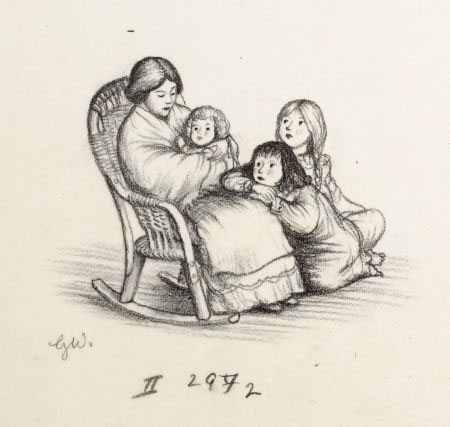
Ingalls’ family girls. Garth Williams, for Little House on the Prairie, by Laura Ingalls Wilder. WikiCommons.
The Little House on the Prairie books were written by Laura Ingalls Wilder and published from 1932-1943. They were based on her childhood, growing up in late 19th century Midwest America, which was still rough frontier country. Because of the editing process and changes that were made to the story by both Laura and her daughter, they are typically classified as fiction rather than autobiography.
There were three daughters in the Ingalls’ family: Mary, Laura, and Carrie. The original illustrations were done by May Sewell, however, they have been superseded by those done by Garth Williams in the 1953 and later editions. These seem to be the ones that people most identify with the books.
Wilder’s stories are aimed at a general readership and illuminate realities of life during that time in America, which appeal to both young people, older readers and historians.
This sweet scene is a quiet moment of togetherness, probably before a fire, with the daughters eagerly listening to their mother. The love and family bond of those women was incredibly strong and so literally important to their survival. Williams’ simple lines reveal faces of great expression and distinguish each of the girls personalities throughout the books.
Though quite young, the girls are represented participating in hard farm labor and being active members of their family and their little Wisconsin community. This is made possible by not showing them in difficult bodices and unreasonable dresses, but rather typical clothing of the era‚ dresses, but practical as possible.
Their innocence as well as the difficulties of growing up at this time are evident in Williams’ illustrations of the Ingalls’ girls as they lean on and listen to their mother. Since the mother is pictured as tender, kind, and nurturing, the girls’ position evokes a sense that they admire her or look up to her as the ideal woman. Their innocence is further reinforced by their wearing nightgowns, perhaps symbolic of their vulnerability, and the simple lines of the illustration that evoke a clearer, uncomplicated picture.
